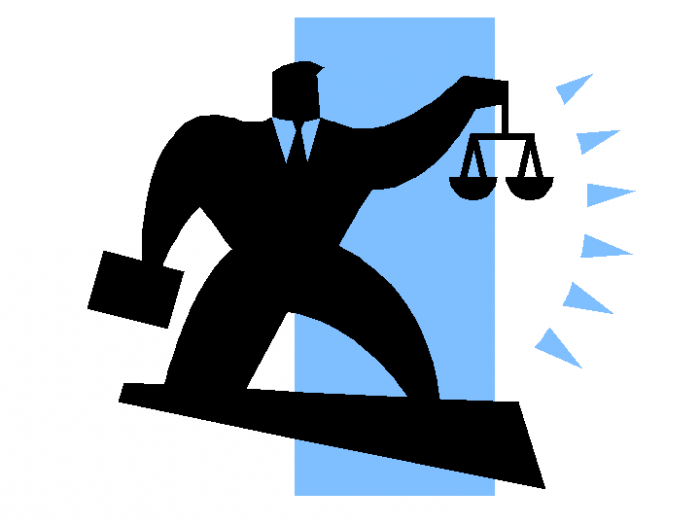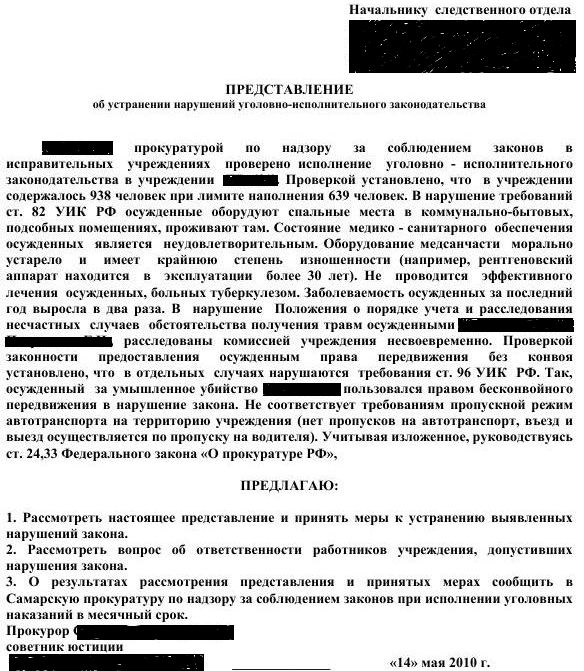In any case of public importance, it is necessary to observe, first of all, the legality of the actions taken. This applies directly to the criminal process, since it is during this period that it is very easy to violate the rights and freedoms of a person, not only of those who are involved in a crime, but also of those who are witnesses or victims.
The prosecutor observes the execution of the lawfulness of each action by the employees of the police investigation department or inquiry department.
Functions of the prosecutor
The prosecutor differs in his functions from other citizens and officials in the criminal process. For him, the legislation ("Federal Law" On the Prosecutor's Office ", the Code of Criminal Procedure of the Russian Federation) provides for special articles and provisions according to which he is responsible for observing the legality of the procedural actions. In this case, the public prosecutor performs only a supervisory function and in no case should he himself participate in the conduct of investigative actions.
The prosecutor, according to the Code of Criminal Procedure of the Russian Federation, can only give written or oral instructions on the implementation of any actions, and also has the right to freely check the case file, whether the actions taken by the investigation or inquiry staff comply with the norms of the criminal procedure code.
The prosecutor himself does not perform any procedural function and cannot directly intervene in the affairs of investigators or interrogators.
Representation
In court, the prosecutor is the public prosecutor, performing its main functions - compliance with the law. In the event that the rights of the parties or legislative norms were substantially violated, and the prosecutor saw this, he can make a submission.
The submission of the prosecutor is the act of the prosecutor responding to a violation of the law, brought to the body or official who is authorized to consider such cases.
The document consists of several parts, namely: introductory, descriptive and resolute.
The prosecutor’s submission is an example of the fact that the public prosecutor can not only petition for sentencing, as many are accustomed to think, but also monitor compliance with the law in any area of public life.
Appeal
After in court of first instance a verdict was passed, the prosecutor has the authority to appeal the decision of the court, which does not yet have legal force, that is, he has the same rights as other participants in the criminal process.
An appeal (appeal by the prosecutor) can be used if the evidence related to the case was not initially presented in court, the declared witnesses were not summoned, and significant petitions were rejected. The essence of the matter does not matter at the same time, and the representation of the prosecutor in the criminal case contains only a description of the violated criminal procedural rules of the law.
It should be noted that evidence or witnesses can be accepted only if they were stated earlier in the court of first instance, but were not accepted. This rule applies not only to the representation of the prosecutor, but also to all complaints to the appellate court.
The prosecutor may appeal court sentences, including sentences of the Judicial Collegium for Criminal Cases, and military sentences of the Supreme Court of the Russian Federation.
Terms of Appeal
It takes 10 days from the date of sentencing in the trial court to make an appeal by the prosecutor. If this deadline is missed, the submission is returned to the public prosecutor, but he can petition for the restoration of the missed deadlines, while indicating those good reasons for which this period was missed.
Within 14 days from the date of submission of the submission, the body to which this document was sent must make a decision. In the case of a positive response to the consideration of the document, the prosecutor also participates in the process, submitting motions and presenting evidence.
It should be noted the importance of the participation of the prosecutor in the court of appeal. He must be present so that the process is carried out in accordance with the law, without prejudice to the rights and freedoms of citizens, that is, the principle of competition is applied.
Cassation
The cassation representation of the prosecutor is somewhat different from the appeal, but it carries the same semantic load. The difference is that the appeal is submitted to the decision of the justices of the peace, the cassation - to everyone else.
This document describes in exactly the same way all violations of the criminal procedure rules if they were committed in court at the first stages of the consideration of the case. There should be indications of which particular articles were applied incorrectly, which entailed a violation of the rights of one of the parties involved in the case.
In addition, the appeal submission of the prosecutor, as well as the cassation, contains a solution to the question of the application of the code in the right way. The deadline for submitting a submission and action if they are missed is 10 days from the day the sentence is pronounced, or a motion to restore the missed period.
If the prosecutor, after making a submission, decided to refuse this action, he has the right to withdraw the document.
Supervisory review
In the event that a court session has already been held, but the cassation appeal of the prosecutor is not satisfied, he may appeal the decision in a supervisory procedure.
According to the Federal Law “On the Prosecutor's Office”, the prosecutor has the right to demand any case from the court clerk, even for which the deadlines for filing a complaint or presentation have been missed, and to appeal it in the manner of supervision. If the appeal of such cases is not within the competence of the prosecutor, he may request a written written submission to the supervisory public prosecutor.
By law, supervisory review has a special procedural status. That is why the legislation provides for courts that have the right to consider such submissions. According to Article 403 of the Code of Criminal Procedure of the Russian Federation, supervisory representations may be brought by the prosecutor of the subject or the Prosecutor General of the Russian Federation.
Reply to the prosecutor
The response to the supervisor's submission in a supervisory order can be either positive or negative. If the answer is yes, the case is considered, and a specific decision is made, for example, to cancel the decision of the court in which the case was considered. In this case, the materials are sent for further investigation, if necessary, or are acquitted.
If the court’s answer is no, then further appeal takes place in the following order: rulings of the presidiums of the courts of the constituent entities of the Russian Federation or the Judicial Collegium for Criminal Cases can be appealed in a supervisory review procedure, as indicated earlier. The decisions of the Presidium of the Supreme Court of the Russian Federation are not subject to appeal, with the exception of cases of new circumstances.
Submission to rectify violations
In addition to the submission, which is submitted to the court and contains the totality of the violated norms, there is also the submission of the prosecutor to eliminate the violations.The subject of this document may be violations of the norms of the law in various areas of social activity and contain the requirements to bring any person (or persons) to material or disciplinary liability. The response to the submission must be sent in writing to the prosecutor, who submitted the document for consideration to the competent authority.
Classification of Views
It is also worth highlighting, based on the foregoing, that there is an unlawful classification for this type of document, such as a submission made by the prosecutor. Allocate supervisory and non-supervisory representations.
Non-supervised documents are precisely those that are brought to the judicial office - appeal, cassation and in the manner of supervision.
Supervisory representations are related to the direct function of the prosecutor in supervising and identifying violations of laws. This applies primarily to public officials.
Complaint about submission
For any representation of the prosecutor, if the case concerns individuals or legal entities, and is considered in court, you can file a complaint.
In the event that the prosecutor does not agree with the court ruling or decision and asks to tighten the sentence or increase the fine to the convicted person, this person has the right to file a complaint with the same court as the prosecutor of the appeal or cassation instance. In any case, the convicted person may raise objections that are based only on the norms of the law, in writing, independently or with the help of third parties.
Protest and submission
In the current legislation, protest and representation are defined in different articles, however, the second term is increasingly used, although the functions of these documents are different. In order not to get confused in the variety of procedural documents that the prosecutor can submit and declare, it is necessary to precisely establish the meaning of these terms.
The submission, as mentioned earlier, is the act of the prosecutor responding to violations. In court sessions, they began to apply this concept much more often. The protest provides for strong disagreement with something. And such an approach would be considered contempt of court. Therefore, the term representation - as more democratic - began to be used in most cases.
However, if the protest is a statement about the violation of any one norm of the law, then the submission made by the prosecutor is a complex document. Its subject is several violations of the provisions in the law, which must be eliminated or brought to justice of certain persons.
It should also be noted that all these documents should be considered regardless of what decision is planned to be made. It is unacceptable to publicize the prosecutor's refusal to take measures to eliminate violations, if there is no reason for this.
Submission Content
The information that each submission of the prosecutor must contain is quite characteristic of the court ruling. However, the need to enter information is determined by the practical significance of this document:
- The name of the court.
- The name of the person filing the submission (prosecutor) and the procedural status (public prosecutor).
- An indication of which court decision is being appealed or with which the prosecutor does not agree.
- The requirements of the prosecutor.
- The reasons why the prosecutor believes that the decision is wrong.
- List of documents and evidence that may be attached to the submission.
What the prosecutor’s submission looks like (an example is given as an example) for eliminating violations in the penal law, you can see the photo below.
Thus, the prosecutor, in carrying out his direct duties, must not only identify the facts of the incorrect application of the law or the violation of its norms, but also must demand any information related to the case and give instructions to eliminate the violation.
With the amendments to the Code of Criminal Procedure, which took place first in 2007 and then in 2014, the prosecutor was somewhat limited in his powers, but this gave him the right to take an observer position and become an uninterested party in any case.








